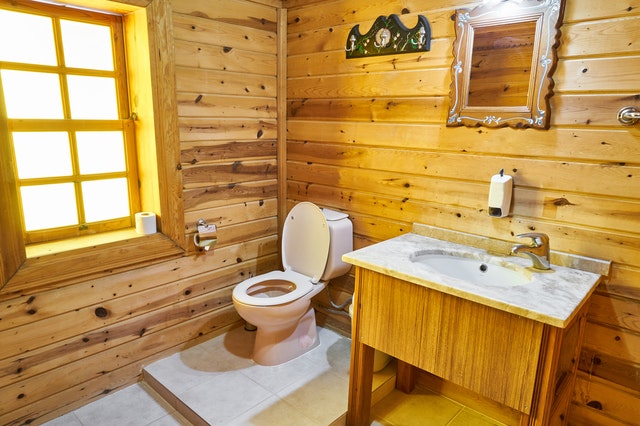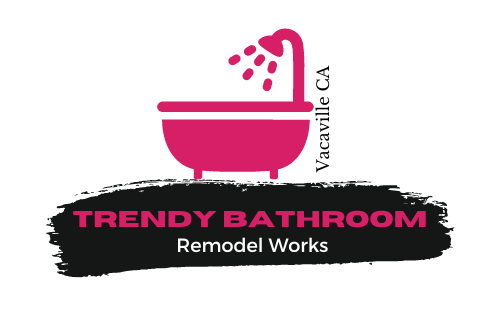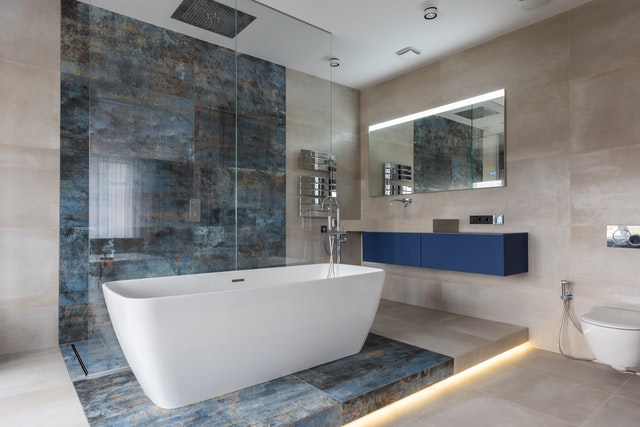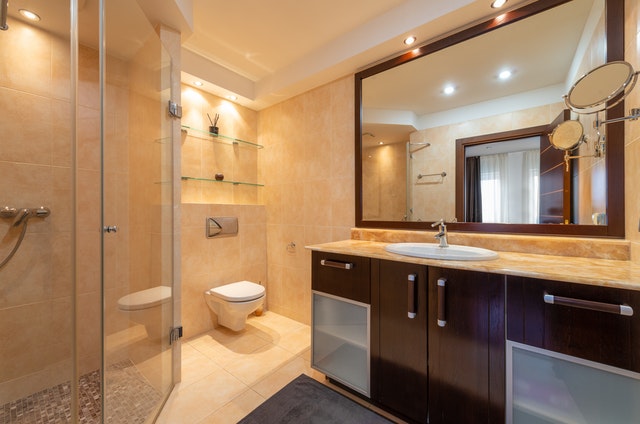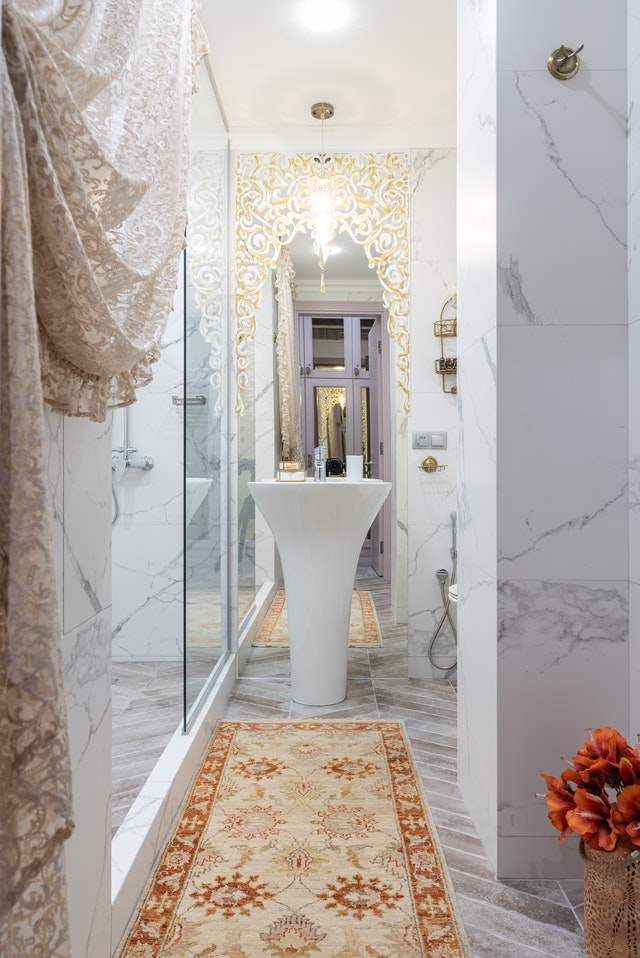The quality, durability, and even porosity of stones can vary greatly depending on where they are quarried and who is selling them. Seek out a reputable dealer and shop carefully.
Some people like the look of a little wear and tear with their stone surfacing, but others, having spent a bundle on the stone, want it to look next to perfect. As a surface for the bath, natural stone is almost perfect—but not quite. Most stone is hard, durable, and water-resistant. But even extra-hard granite may stain if exposed to harsh chemicals or acidic substances, and it requires a periodic application of a sealant.
Marble and limestone are beautiful in the bath, but they stain and scratch easily. Be cautious with hair colorings and other chemicals, and wipe up spills right away. Use wax to protect a marble finish, and safeguard limestone with a sealant.
Protect all types of stone from gritty dirt, which dulls finishes over time, by sweeping regularly and damp-moping with a small amount of mild, nonacidic soap or cleaner. Too much soap will leave a film. Polished stone may benefit from a periodic application of a commercial polish to enhance luster and beef up protection, and repair kits are available for some stains and scratches.
Ceramic tile
Ceramic tile has been used to beautify bathrooms for many centuries, and it remains a good choice today. It is durable—more so than some types of natural stone, in fact—and impervious to stains and moisture. Ceramic tile is manufactured in many sizes and shapes—from tiny hexagonal mosaics to 12-inch squares—and in a wealth of colors—neutrals and earth tones, pastels, brights, and iridescents. This dazzling variety permits personal expression with one-of-a-kind designs and configurations. Ceramic trim pieces and decorative borders can also create interesting effects and even mimic architectural detailing.
Glazed, shiny tiles work well on counters and walls but are not suitable for floors in the bath. For safety, choose a floor tile with a gritty, nonslip surface.
Ceramic tiles themselves are a snap to clean, but grout lines pose a challenge. You can keep grout sparkling by treating it with a sealer and then cleaning it regularly with a mild bleach solution. Even easier, use colored grout.
When you shop, tell your dealer where you will use the tile, how much traffic it will get, and how long you need it to last. An experienced dealer will help you make the right choice.
Ceramic tile is composed of clay, water, and other naturally occurring substances fired at high heat.
Glazed tiles are covered with a ceramic coating that gives the tile body its color and finish. The glaze effectively repels moisture, stains, bacteria, allergens, and odors, but it also creates a shiny, potentially slippery surface. The higher the glaze, the less appropriate for use on floors. Glazed tiles are easy clean, which is an important consideration in a room that requires daily maintenance.
Unglazed tiles look natural, rough, and rustic because they derive their texture and color from clay rather than from a colored coating. Unglazed quarry tiles in rich beiges, browns, and rust are typical of the look. They are most often used on floors where their thickness and density make them especially durable and slip-proof. Some unglazed tiles are stain resistant, but most require periodic sealing.
Glass
Glass is an exciting surface for sinks, countertops, walls, and even floors. Clear or colored glass sinks and counters are showing up more often, as are glass tiles. Available in many sizes and in translucent, transparent, or opaque finishes, glass tiles offer an amazing range of color—shimmering jewel-tones, frosted pastels, ambers with the look of carnival glass, and dark shades shot through with silver or gold. Large, smooth glass tiles may be too slippery for a bathroom floor, but smaller pieces with many grout lines can provide a safer, gritty surface.
Glass is durable and easy to clean, but installation is costly. If you find that a large expanse of glass tiles exceeds your budget, consider combining them with less pricey synthetics, ceramic tiles, or even wood. Use the glass as a border or cover only a small area, such as a vanity top.
Glass block, an architectural staple in the 1930s and’40s, has made a comeback in bathrooms. Because they transmit 80 percent of available natural light, these translucent blocks are ideal substitutes for windows when privacy is desired, and can also be used as shower walls or privacy partitions without compromising light or openness. Available in many square or rectangular sizes, glass block also offers several finishes and textures.
Concrete
Considered daring and unconventional only a dozen years ago, concrete is now gaining wide acceptance for surfaces in the bath, as well as for tubs and showers. Surprisingly, this mundane material can be formed into graceful shapes and topped with several types of finished—rough and rustic, glossy and polished, or subtly glowing. If you were expecting a boring, sidewalk-like surface, you’ll find the color selection surprising, too. Although many homeowners prefer muted, earthy shades, such as ivory, pearly gray, or sand, vivid hues are also available, depending on the skill and inventiveness of the concrete fabricator.
Treated with chemicals, pigments, and epoxy coatings—or mixed with bits of metal or colored glass—concrete also takes on the look of stone this potential for uniqueness is part of this material’s appeal.
Concrete
Concrete is a natural choice, of course, for a minimalist or contemporary decorating scheme, but used in conjunction with more conventional elements, such as wood or ceramic tile, it is equally at home in a traditional-style bathroom. Concrete counters are not available off the shelf, nor is this a job for a do-it-yourselfer. To assure good results, you will need a specialist to fabricate the concrete for you. Although concrete itself is not expensive, the professional fabrication will set you back, in total, about as much as natural stone surfacing would. Still, it is important that you seek out an experienced contractor or fabricator. And before you make a decision to go with concrete, ask the fabricator to show you a counter, sink, or tub surround that has been in place for some time.
Concrete facts
If you’re afraid that a concrete counter or tub surround in your bathroom will resemble the floor in your garage or the sidewalk outside your house, take another look. The colors, finishes, and special effects possible with concrete are quite varied, and none of them resemble a nasty garage floor. In fact, even a simple concrete application without any bells and whistles appears sleek and streamlined.
If it is treated with a sealant, concrete will stand up well to wear and moisture, provided you wipe up spills right away, clean the surface regularly with a nonabrasive cleanser, and renew the sealant twice a year. Hairline cracks do tend to develop, but they are generally not structural and can be easily repaired. And not to worry—most experts say concrete gets more beautiful as it ages.
